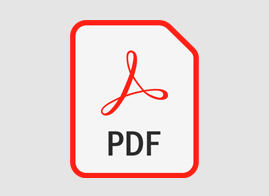Introduction
Understanding of child exploitation and the scale of the problem is still limited. However, we know there is a need for agencies to work together to understand the bigger picture, using tools such as contextual safeguarding, alongside an understanding of the different ways in which children and young people may be exploited.
Need more?
Thank you for visiting our resources pages. These are free to everyone as is our fortnightly safeguarding bulletin – general safeguarding information is too important to restrict. Become a member to access lots more, including training materials for you to deliver in-house on each topic in Keeping Children Safe in Education.
Sign up for FREE fortnightly bulletin.
What about training?
We can deliver training for your setting on this and other subjects via online platforms, or face-to-face in certain areas. Just get in touch to discuss your requirements.
The common feature across all forms of child exploitation is the imbalance of power. Children and young people will receive something in exchange for them completing acts or favours for the person exploiting them. The something may be gifts, status in a group or gang, somewhere to live, etc. The acts or favours required in return are usually manipulative in nature.
The imbalance of power means that consent is not considered, and the choices that the child or young person believes that they have may be nothing of the sort.
A strong response to these types of harms requires a collaborative and aligned partnership working across agencies, communities, families, and with children and young people.
Definition of child exploitation
Child exploitation is when someone uses a child for financial gain, sexual gratification, labour or personal advantage.
Using cruel and violent treatment to force a child to take part in criminal or sexual activities often leads to physical and emotional harm to the child, to the detriment of their physical and mental health, education, and moral or social development.
“The exploitation of children can take a number of different forms and perpetrators may subject children and young people to multiple forms of abuse at the same time, such as criminal exploitation (including county lines) and sexual exploitation.”
Child criminal exploitation (CCE)
CCE involves children and young people up to the age of 18. It’s impossible to identify a lower age limit for when children become exposed to CCE as because indications are that the starting ages across all the forms of CCE are getting younger.
Arguably, the younger the child, the less likely they are to be arrested or identified by law enforcement (the age of criminal responsibility – i.e., the age at which you can be arrested for a crime – is 10 years old in England).
Child sexual exploitation (CSE)
In return for gifts, money, drugs, affection, and status, children and young people are coerced, manipulated and deceived into performing sexual activities. It is not just something that affects teenage girls or specific groups and can happen in and out of school.
Modern slavery and trafficking
Modern slavery is mostly a hidden crime, and to get a true picture of its prevalence is challenging. It’s an umbrella term and includes human trafficking. Trafficking doesn’t necessarily involve travel to another country or even long distance nationally.
Gangs and youth violence
Children are increasingly being targeted and recruited online by gangs using social media. Children can easily become trapped by this type of exploitation when gangs can manufacture drug debts which need to be worked off, and/or threaten serious violence towards and/or kidnap victims (or members of their families) if they attempt to leave.
One of the key messages from those working with children involved in the different aspects of child exploitation is to not give up trying to work with the children and young people, even if they are unwilling to engage.
The TCE programme highlights the importance of perseverance in safeguarding professionals and how that is interpreted by children:
"A lot of people give up on me really easily because they don’t see that I’m engaging, or they don’t think I’m trying or something. It’s not that, it’s just I can’t trust them, if that makes sense. They need to show that they’re going to stay a bit before I can offload and open up to them."
(Child/young person), Tackling Child Exploitation
DSL Training Materials
-

Child Exploitation Presentation
-

Child Exploitation - Presenter Notes
Please note that there is a generic child exploitation update with presenter notes that is provided here. However, on the child sexual exploitation and child criminal exploitation pages, there are specific handouts, quizzes and scenarios for each sub-topic.
Save time and improve your safeguarding approach…
Bite-size training materials to share with your staff every month.
Support to explore and develop your safeguarding culture.
A huge array of resources and professional experience at your fingertips.
Get in touch now for a personal tour of the site and details of membership benefits.
We look forward to working with you.

